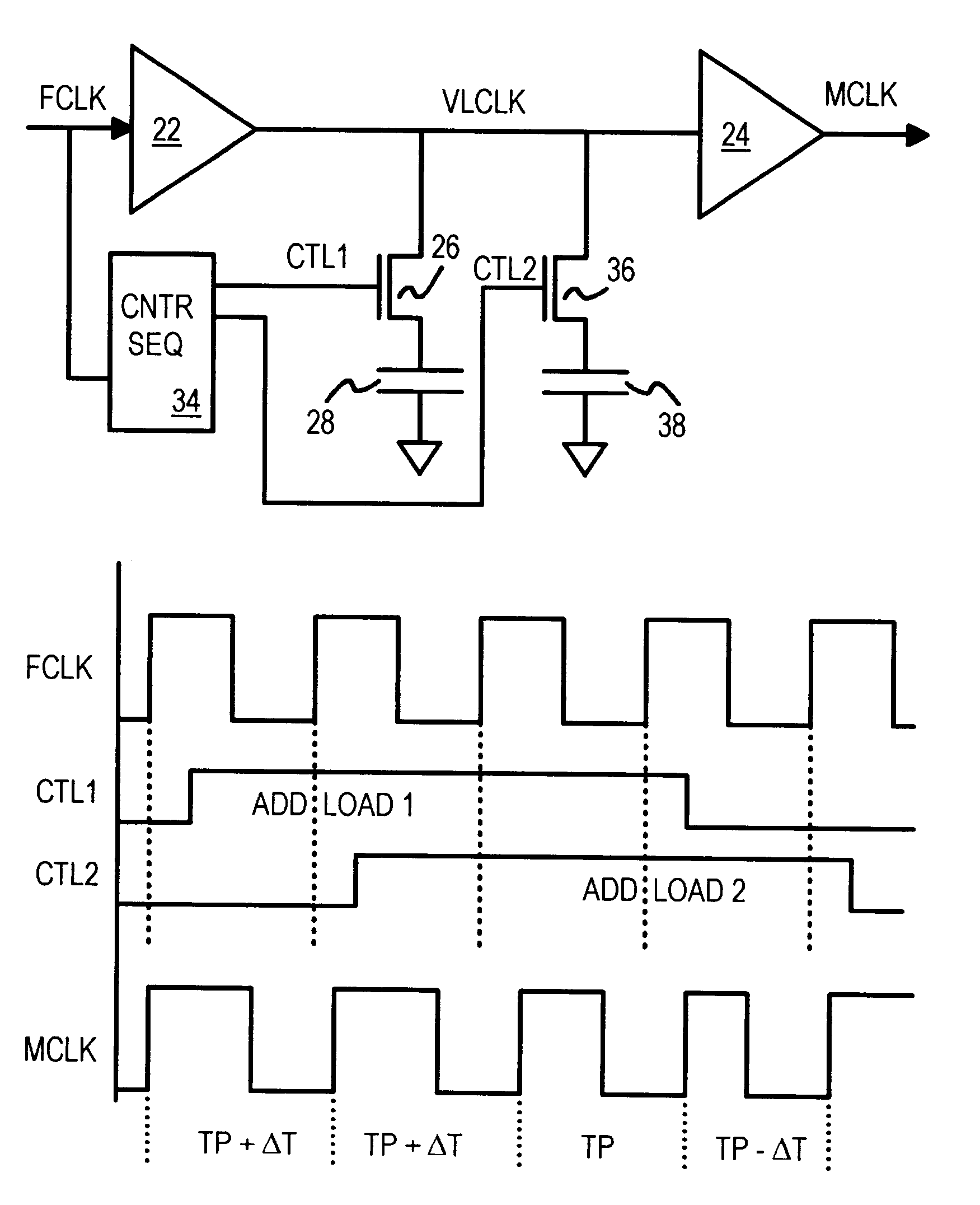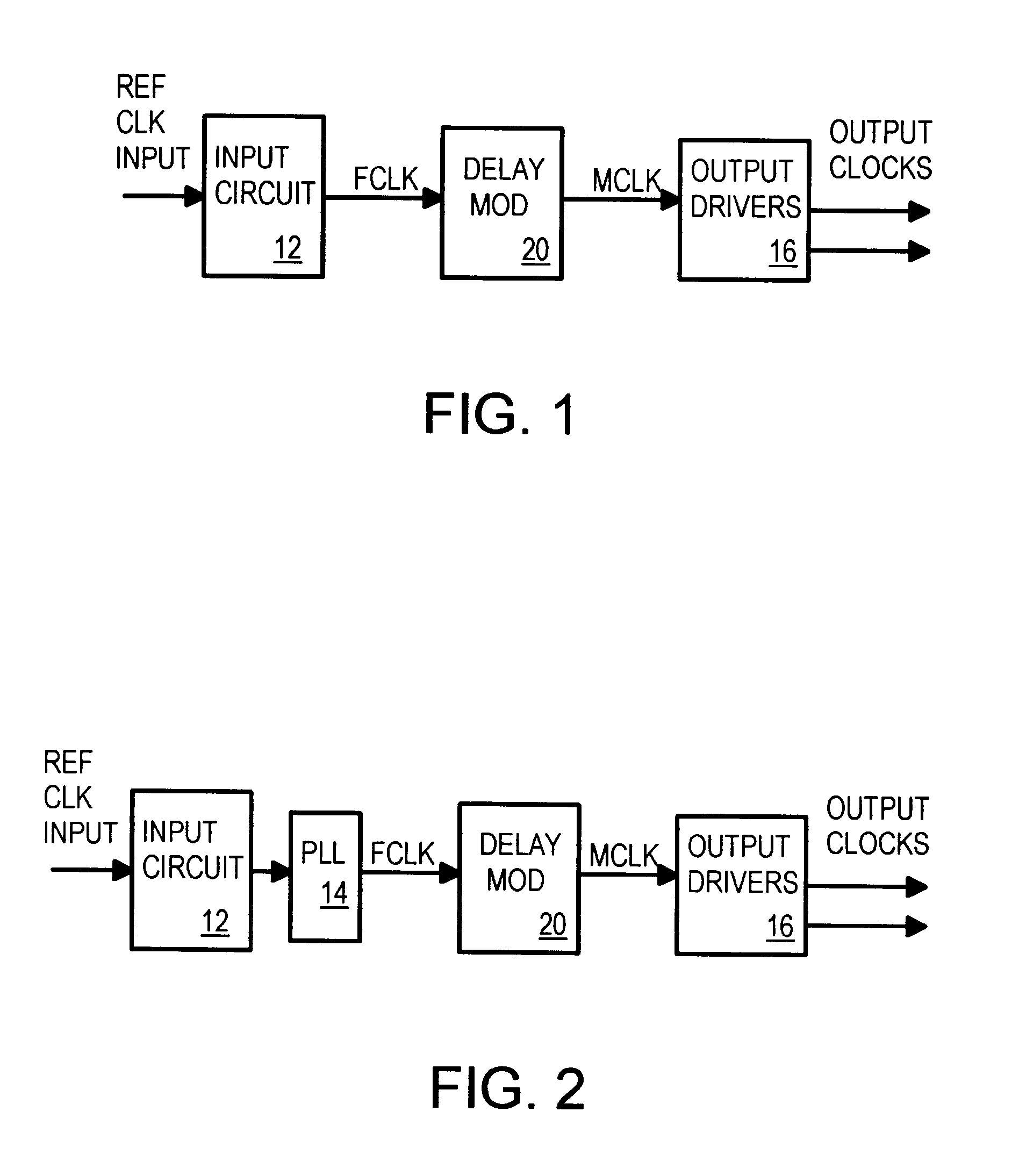Spread-spectrum clock buffer/driver that modulates clock period by switching loads
a clock buffer and clock period technology, applied in the field of integrated circuits, can solve the problems of electromagnetic radiation that affects intentional receivers, can often be influenced by unintentional transmitters, and can cause disturbances in other electronic equipment,
- Summary
- Abstract
- Description
- Claims
- Application Information
AI Technical Summary
Problems solved by technology
Method used
Image
Examples
Embodiment Construction
Several other embodiments are contemplated by the inventor. Output drivers 16 can include branching logic to generate multiple copies of MCLK that drive different parts of a system, such as a memory clock to a clocked DRAM and a processor clock to a microprocessor that are both based on the same reference clock. More complex clock-dividing and power-down clock disabling logic can be included in output drivers 16. Either inverting or non-inverting buffers can be used for the input circuit, output drivers, and buffers in the clock modulator. The sequencer can be clocked by either the rising or falling edge of FCLK, or by a derivative of FCLK. The sequencer clock and FCLK could each be derived from a common upstream input clock.
A p-channel load-switching transistor could be substituted, or both a p-channel and an n-channel transistor could be used in parallel as a transmission gate to switch the clock load on and off. Other transistors, resistors, or capacitors could be added in parall...
PUM
 Login to View More
Login to View More Abstract
Description
Claims
Application Information
 Login to View More
Login to View More - R&D
- Intellectual Property
- Life Sciences
- Materials
- Tech Scout
- Unparalleled Data Quality
- Higher Quality Content
- 60% Fewer Hallucinations
Browse by: Latest US Patents, China's latest patents, Technical Efficacy Thesaurus, Application Domain, Technology Topic, Popular Technical Reports.
© 2025 PatSnap. All rights reserved.Legal|Privacy policy|Modern Slavery Act Transparency Statement|Sitemap|About US| Contact US: help@patsnap.com



